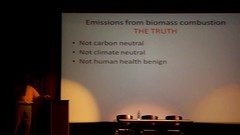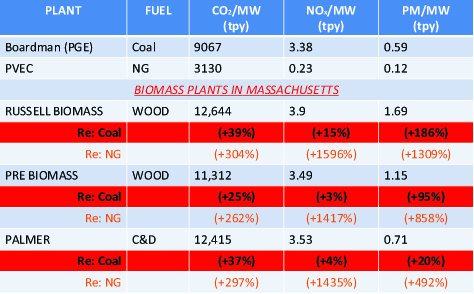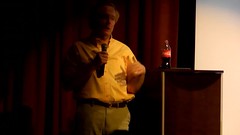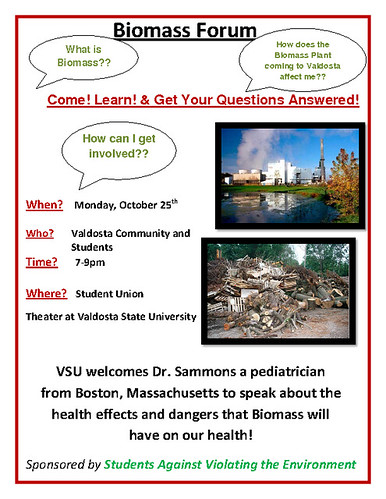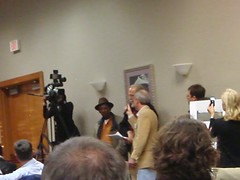 Here’s video of what I asked at the recent VLCIA biomass event
(6 Dec 2010) and the answers from the panel.
Here’s video of what I asked at the recent VLCIA biomass event
(6 Dec 2010) and the answers from the panel.
So there’s actually not any new study of wood sourcing (Brad Lofton told me after the meeting that the study had been “completed” after we met in June), and the study that exists is not publicly available. Someone from Sterling promised me after the meeting to redact the private parts of the wood sourcing study and provide the rest for public distribution. We’ll see.
Regarding my question about who will buy the electricity and whether we’ll end up like Plant Scherer, selling electricity to Florida while keeping the pollution here, the answer was: Continue reading

